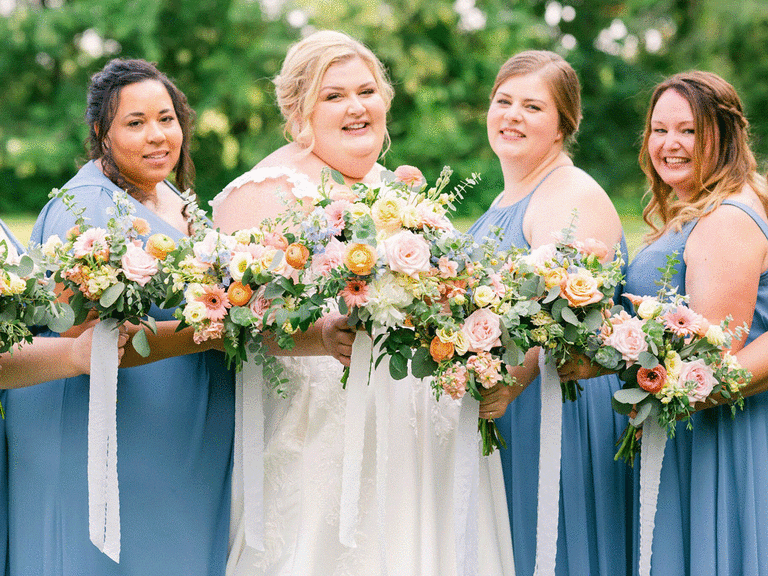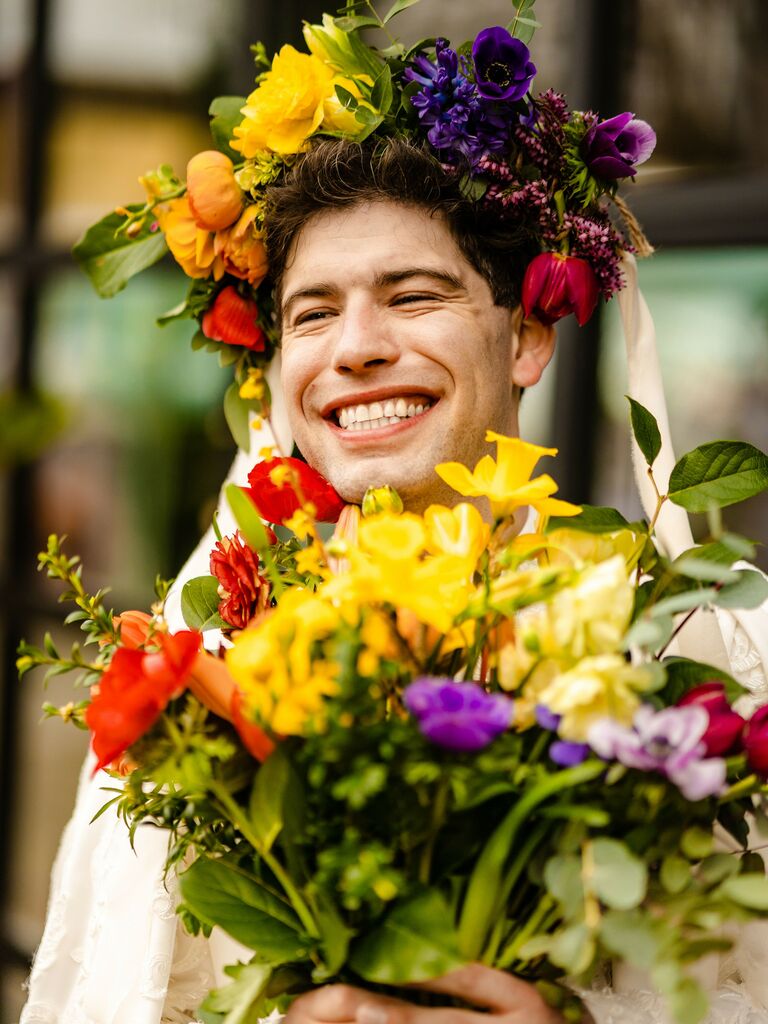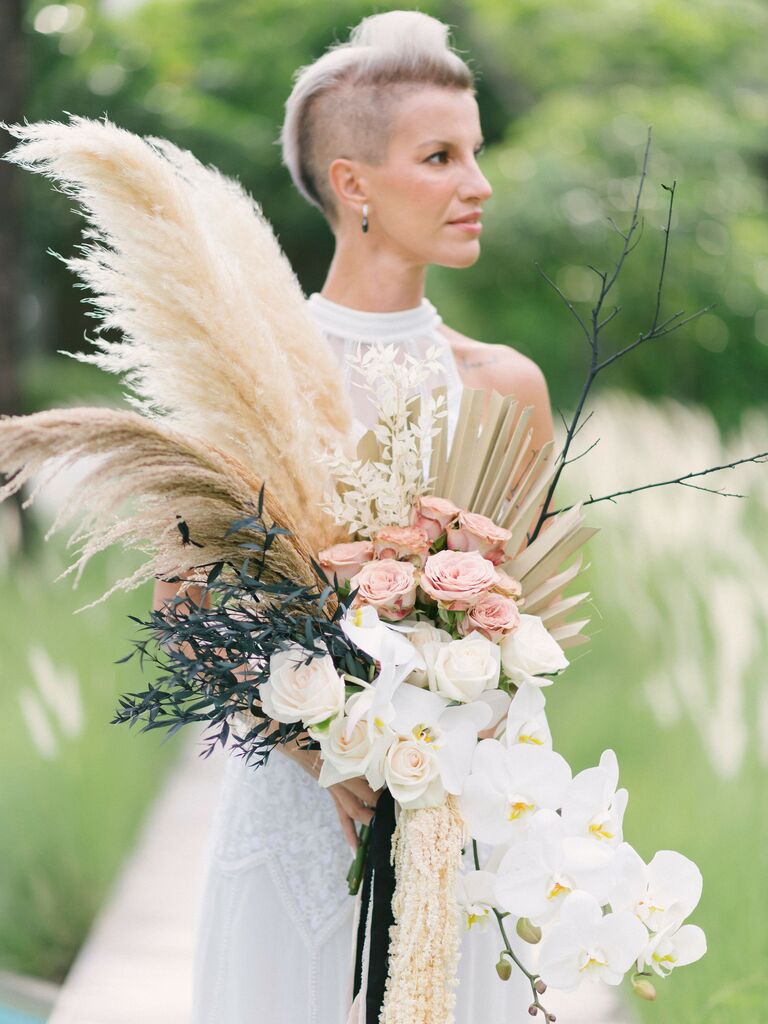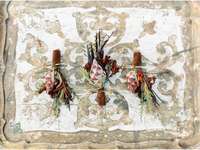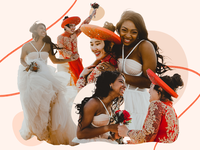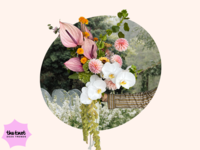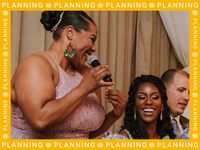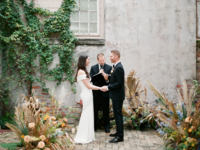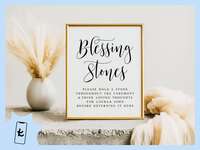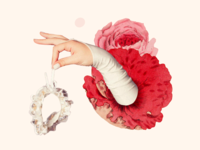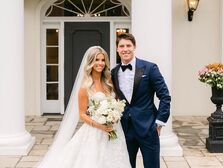Understanding Wedding Traditions: Why Do Brides Carry Flowers?
Wedding bouquets are beautiful works of art full of symbolism and tradition. But if you're going through the wedding flower decision-making process right now, you may have lots of questions about them, like what's the history of the bridal bouquet, why do brides carry flowers and do you have to do the bouquet toss? Luckily, we've answered all of these questions and more below with the help of floral experts. Get ready to know just about everything you need to know about bridal bouquets.
The History of the Bridal Bouquet
The bridal bouquet are flowers the bride holds as she walks down the aisle, and this is believed to have originated from the Ancient Greeks and Romans. "Carrying flowers has been a part of Western weddings for centuries, with the traditional bridal bouquet coming into popularity during the Victorian Era. Bouquets of the time would feature seasonal blooms with specific meanings (also known as floriography)," Marta Knudson, creative director for Sophie Felts Floral Design, explains. The most popular flower symbols were fertility and fidelity. Today, to-be-weds consider the flowers' looks and symbolism when choosing their bouquets. And even though bridal bouquets are a bride-centered tradition, we think anyone (yes, that includes grooms) who wants to hold a beautiful bouquet of their favorite blooms at their wedding is a great idea.
Why do brides carry flowers?
Historians believe the original reason brides carried flowers was to ward off evil spirits and bad luck. These bridal bouquets also included certain medicinal herbs for their healing powers. Brides carried bouquets because of their fragrance too, but it's not for the reason you think. "Before modern bathing routines, a wedding bouquet of fragrant flowers and herbs helped conceal body odor—a trick we thankfully no longer have to rely on," Samantha Iacia, editor at The Knot Worldwide, says.
Why do bridesmaids carry flowers?
The origin of the bridesmaids carrying flowers tradition is unknown, but it's thought to be for the same reasons brides carry bouquets. Bridesmaids often complement the bride's look, so having a wedding bouquet similar to the bride's wasn't unusual.
Does the bride hold the bouquet during the ceremony?
Traditionally, the bride holds her bouquet during the processional and hands it to the maid of honor or one of her bridesmaids to hold once she reaches the altar. Giving your wedding bouquet to someone else during the ceremony allows you to be hands-free––which is important for the ring exchange, reading your vows, holding hands with your partner or wiping away happy tears.
How do I choose my bridal flowers?
There are several different ways you can go about choosing your bridal flowers. First, make a wedding flower budget. According to The Knot 2021 Real Weddings Study, couples put 7% of their wedding budget towards flowers. The next step is to find floral inspiration so you're prepared to tell your desired florist your vision. Once you've settled on an idea (thanks to Pinterest and Instagram), contact your wedding florist so you can start talking about details. Finally, considering in-season wedding flowers also helps your bridal flower decision because it can cut costs and increase the odds of availability.
How much does a bridal bouquet cost?
On average, bridal bouquets range between $100 and $350. This price range is based on the kind of blooms you want, if they are in season, how their arranged and your florist. The Knot 2021 Real Weddings Study found that the average wedding flower cost for the 15,000 married couples surveyed was $2,300. This can include table centerpieces, corsages, boutonnières, floral decor, bridesmaid and bridal bouquets.
Does the bridal bouquet have to complement the bride's wedding outfit?
The wedding bouquet doesn't have to match a person's clothing, but the bouquet's design should echo the style and formality of the outfit. "For example, a whimsical wildflower bouquet would generally look out of place alongside a Cinderella-esque ball gown. It's also important that the size of the bouquet doesn't overpower the bride's attire. For slim-fitting wedding gowns, the bouquet should be slightly smaller than the width of the body so the bride's dress can still be seen when she's holding the bouquet in front of it," Iacia advises. If you're unsure how to style your bouquet and wedding outfit, show your florist pictures of your outfit so they can help you find the best bouquet to go with your wedding day look.


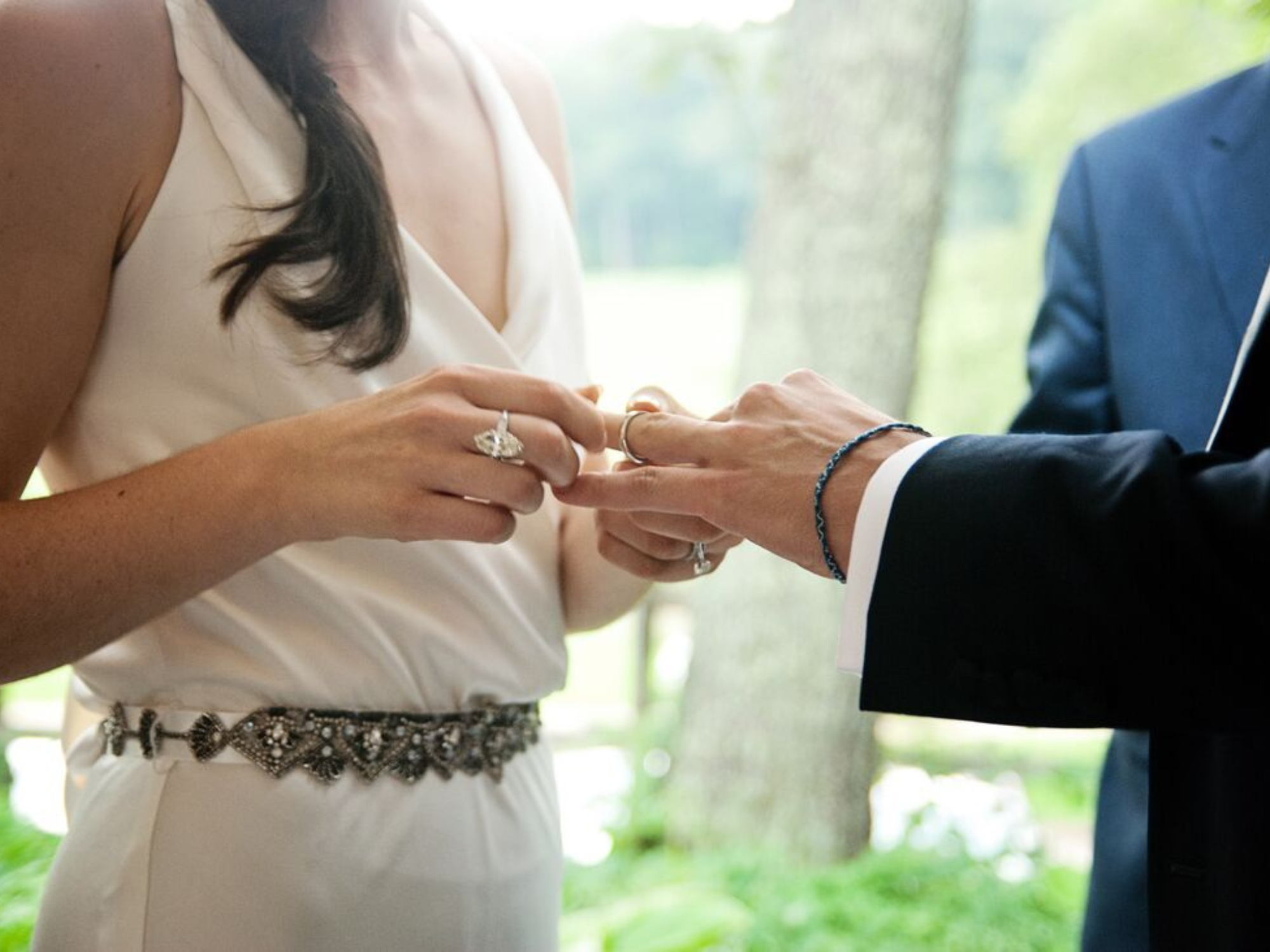
Do I have to do the bouquet toss tradition?
The bouquet toss is a floral tradition that started in England. It was believed that getting a piece of the bridal bouquet or the bride's dress brought good luck and fortune. With this superstition came a mad dash to grab parts of the bride's blooms or garments. Resulting in the bouquet toss, which helped the bride get away from the chaos. Now, the wedding bouquet toss tradition is done for fun during the reception, with the superstition that whoever catches the bouquet will be the next person to get married.
Whether or not you do this tradition is completely up to you, but if you do want to participate, we recommend you and your partner think about the kind of guests attending before doing the bouquet toss. "If you have a lot of single, fun-loving friends who you know will be all-in for the bouquet toss, it can be a hilarious photo op. For a group of guests who are mostly coupled up or already married, the eligible crowd for the bouquet toss might be a little scarce. [And] if there are a lot of young kids attending the wedding, bringing all of them onto the dance floor to catch the bouquet may not feel age-appropriate," Iacia says. Just remember that no one should be forced into doing the bouquet toss since that will only lead to people feeling uncomfortable and awkward.
What should I do with my bouquet after the wedding?
Wedding flowers are not only beautiful and full of memories, but they are also a financial investment, so why not try to preserve them? There are numerous wedding bouquet preservation ideas to choose from, each with its own preparation process. "Lots of our brides are having their bouquets preserved in resin––many small businesses are creating beautiful pieces of art with the flowers," Knudson says. You can also make this a fun DIY project with your spouse by pressing, air-drying or painting your florals.
Do I have to carry flowers?
Knudson thinks wedding bouquets are great for when people want to keep their hands occupied during nerve-wracking moments, like walking down the aisle, and a perfect way to tie nature and the surrounding environment. "Especially if you include seasonal and local flowers, grounding your day in a specific time and place." But ultimately, the decision as to whether you should carry flowers is up to you. So get creative and think of other ways you can incorporate flowers. Knudson adds, "A wearable like a cuff corsage or flower crown is delicate and timeless. I also love the idea of doing something unexpected like a floral shawl or veil."
What can brides carry instead of flowers?
Don't be afraid of shaking up tradition and opting to not carry flowers on your wedding. You can hold an oversized balloon, walk down the aisle with your pet, carry a lantern, or even carry a bouquet of jeweled brooches. The wedding bouquet alternatives are endless––make sure you stay true to what you think would work best for your special day.
